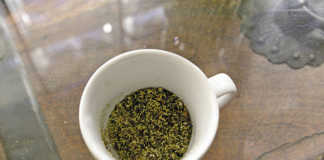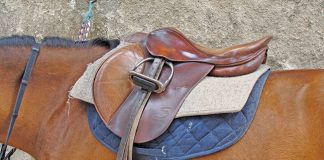
A wolf tooth is a small peg-like tooth found in front of the first cheek tooth on each side of the mouth, on both the upper and lower jaw in about 50% of horses, donkeys and mules. Strictly speaking, it’s also a cheek tooth, or premolar, but instead of the flattened chewing surface or ‘table’ you see in other cheek teeth, it’s usually small and oval. It normally falls out between 18 months and two years of age. But some don’t, causing problems. Wolf teeth have no function in the mouth and often occur only in the top jaw, or only on one side. They erupt between the canine tooth, or ‘tush’, and the cheek teeth in the area of the horse’s jaws called the ‘bars’.
Uneven bit
A well-fitting bit acts on the bars of the mouth. Bit pressure on the bars causes the horse to bring its head down ‘onto the bit’. It also allows the rider to steer the horse by pulling on one rein or the other, causing pressure on alternate bars. However, if there’s a small wolf tooth on one side and you pull both reins evenly, the bit will be uneven in the mouth.
The horse will then often refuse to turn in that direction, or throw its head, as it feels uncomfortable. This becomes magnified in other forms of schooling. For instance, the horse may only take one lead when cantering, or turn its head away from the direction of the circle when cantering to one side and not the other.
Problems
Even two wolf teeth can cause problems. If they’re loose, they’ll hurt as the bit moves over them, causing the horse to shy unexpectedly or rear. Sometimes wolf teeth may come out on the inside of the jaw, irritating the tongue, or they may face outward and cut the cheek. There are even ‘blind’ wolf teeth that lie under the gum but still cause the horse pain when you pull on the reins.

A small trace of blood where a wolf tooth was extracted from the upper jaw of a horse by equine dentist Andrew Portch.
What to do
Experienced riders and trainers can show you where to look for a wolf tooth. Stick your thumb (right thumb on left side, left thumb on right ride) gently into the corner of the mouth and rub it along the bars until you come up against the premolar. The wolf tooth will be a small ‘point’ in the gum. Although the part above the gum is small, the tooth’s root can be up to 2cm long.
If you find a wolf tooth, it’s best to consult a vet or qualified equine dental technician. Also, not all wolf teeth need to be removed, for example those found in old horses and that aren’t causing a problem.
Get help
Equine dental technician Andrew Portch removed the wolf teeth seen in the photo. He prefers to work with a vet, who will sedate your horse so that it remains calm, and says local anaesthetic should also be used if the wolf tooth isn’t loose, as removal may be painful. He cautions against unqualified people removing wolf teeth. If the root breaks off in the jaw, it can lead to infection and severe pain, and is difficult and expensive to remove. To learn more, visit www.horsedentist.co.za.
Contact Dr Mac at [email protected]. Please state ‘Horse talk’ in the subject line of your email.













